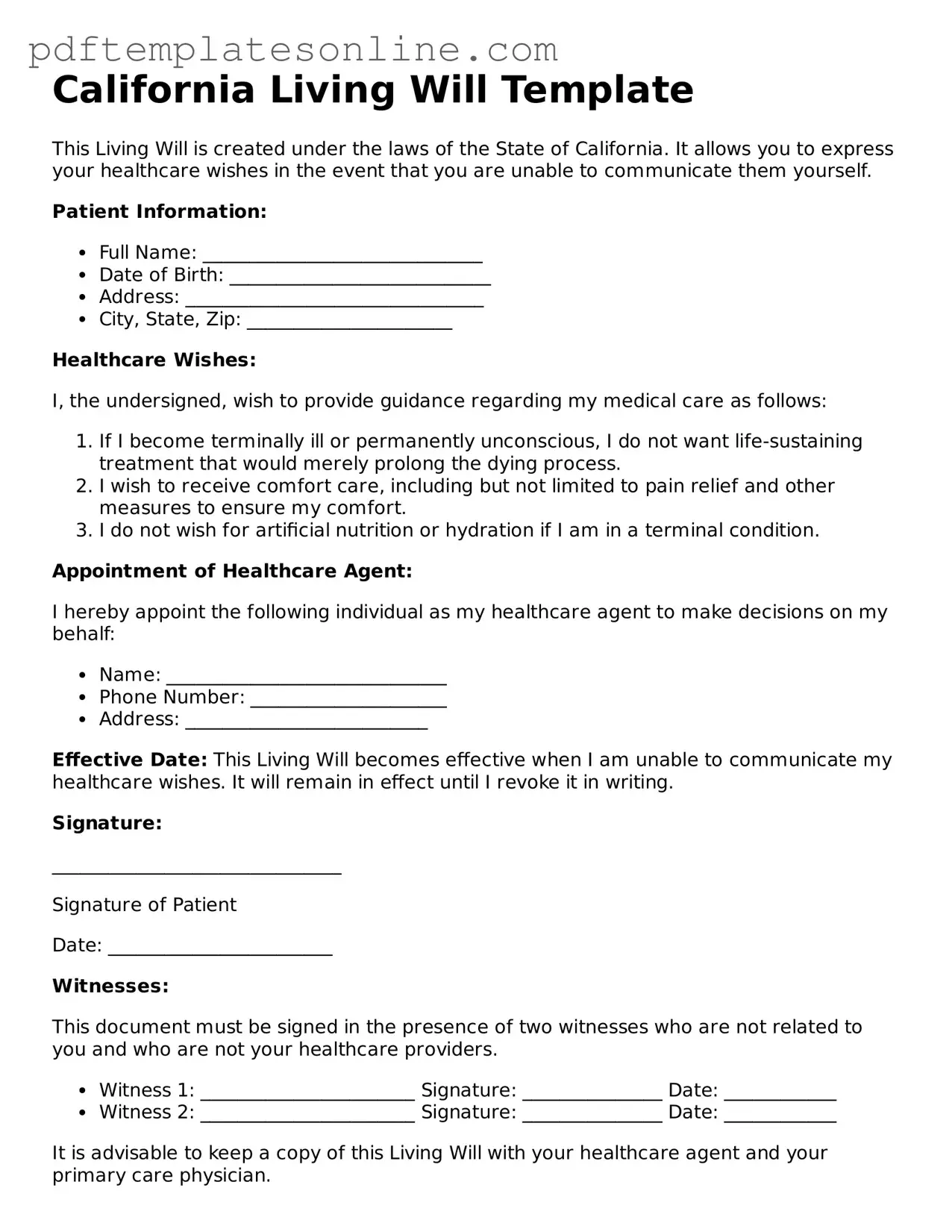Official California Living Will Document
A California Living Will form is a legal document that allows individuals to outline their preferences for medical treatment in the event they become unable to communicate their wishes. This form is essential for ensuring that a person's healthcare decisions are respected and followed by medical professionals and family members. By clearly stating one's desires regarding life-sustaining measures, individuals can gain peace of mind and provide guidance during critical moments.
Access Living Will Editor Now
